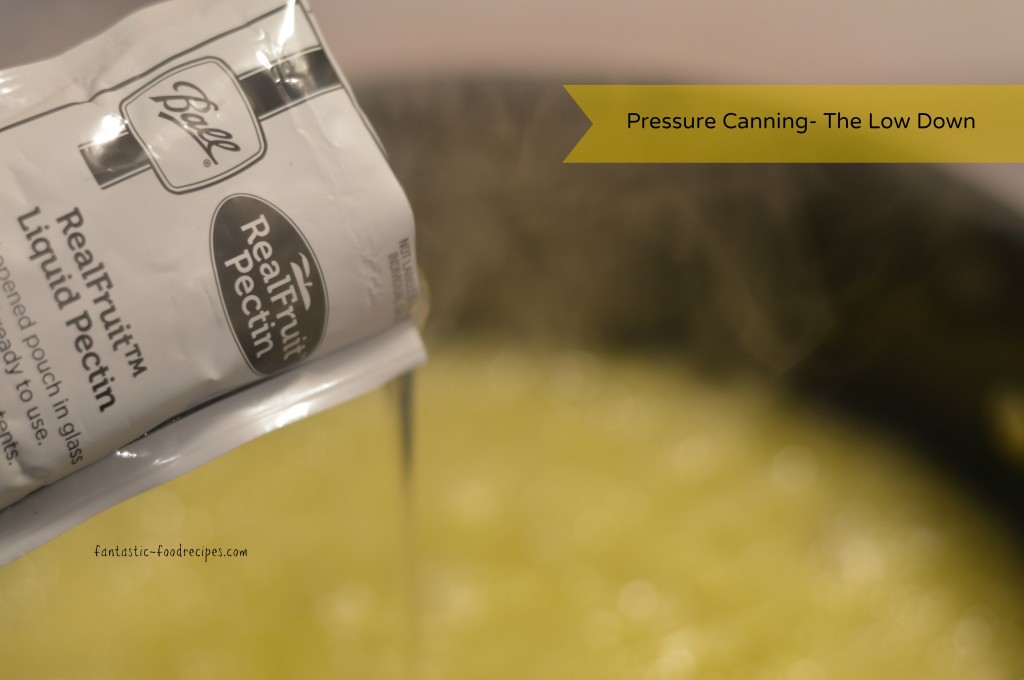Often considered a more intense method of canning, pressure canning is the method used to can low acid foods, such as meat, vegetables, and prepared foods such as soups. These foods require a higher temperature to kill bacteria (240°F), which must be achieved with pressurized steam that only a pressure canner can provide.
Before even thinking of pressure canning, check your owner’s manual to make sure it is safe to use your stovetop with a pressure canner. Some smooth and ceramic top stoves are not compatible with pressure canning.
A pressure canner is a large, stainless pot fitted with a locking lid and a pressure gauge. There are two types of gauge, a dial gauge and a weighted gauge. A canner with a weighted gauge will only have one safety valve on the top. A canner with a dial gauge (the gauge has a needle in the middle that resembles a clock hand) has a regulator, vent pipe, and a safety valve. A dial gauge must be tested annually to ensure that proper temperature is achieved. This can be done at many hardware stores and extension offices. A weighted gauge does not need to be tested unless there is visible damage to the gauge.
The lid is lined with a rubber gasket to ensure a tight seal. Routinely inspect the gasket for nicks, rips, and tears. The pressure canner should also have a rack to keep the jars from touching the bottom.
Inspect the outside of the canner and lid for cuts, scratches, and dents. Check all valves and vents for residue buildup. Clean any buildup with vinegar and a wire brush. Obstruction can cause too much pressure and break your jars.
Once you’ve inspected the equipment, prepare the recipe as directed.
Fill the canner with 2”-3” of water and add filled jars that are fitted with two piece caps. Lock the lid into place and increase temperature to boil the water. Once the gauge has hit 10 PSI, the steam has reached the necessary 240°F required to properly can the foods. Once the pressure canner has achieved the right temperature, you can begin timing your recipe.
If you are canning at an altitude of over 1,000 feet, you will need to make adjustments. The Ball Fresh Preserving website has a downloadable chart that will tell you exactly how to adjust for your altitude.
Don’t let pressure canning scare you. Work carefully and follow proper procedures, and you’ll be a pro in no time!
If you like this post, see more DIY, recipes and tips on Pinterest.
Come follow me on Facebook and Twitter.




Leave a Reply